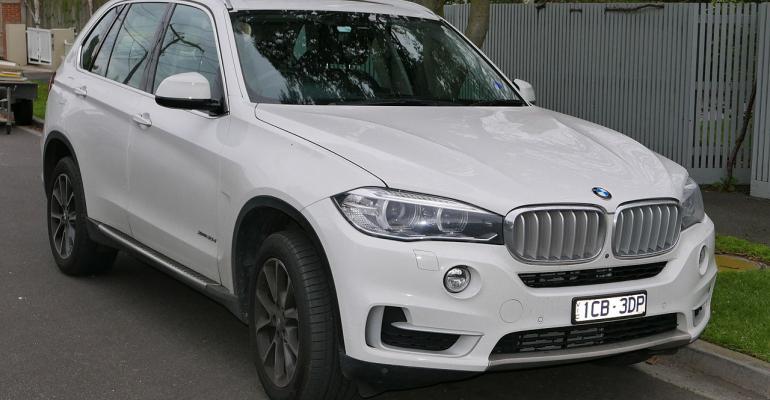TOKYO – European automakers continue to make inroads into building smaller, cleaner and more robust powertrains.
According to the latest statistical review by the International Council on Clean Transportation, average engine displacement continued to decline in 2014, falling to 1.61L, from 1.62L in 2009, while power inched upward from 109 hp to 121 hp in the same timeframe.
The 10-year jump was even greater. In 2004, average engine displacement and power in the then-27-country European Union totaled 1.74L and 107 hp. The EU currently comprises 28 nations, having added Croatia in 2013.
Displacement and power results are based on new passenger-vehicle registrations, which totaled 12.5 million units in 2014, 14.1 million in 2009 and 15.2 million in 2004, according to the council’s 113-page study of European vehicle-market statistics.
In other metrics reflecting the steady shift to cleaner and more-efficient engines:
- The number of cylinders per engine declined from an average of 4.1 in 2004 and 4.0 in 2009 to 3.9 in 2014. By brand, BMW registered the greatest 10-year decline in cylinder numbers from 5.2 to 4.4. Most other nameplates including Audi, Fiat, Mercedes-Benz, Peugeot, Renault, Volkswagen and Volvo reported declines of 0.2 to 0.3.
- Carbon-dioxide emissions were reduced to 123 g/km in 2014 from 163 g/km in 2004, a 25% decline. The EU’s 2015 CO2 emissions target is 130 g/km, putting the union on track to reaching its 2021 target of 95 g/km.
- Fuel economy, based on the New European Driving Cycle, improved 30% over the period from 36 mpg (6.5 L/100 km) to 47 mpg (5.0 L/100 km).
- BMW, Mercedes and Audi models achieved an average 45 mpg (5.2 L/100 km) in 2014, while Peugeot and Renault improved to 53.5 mpg (4.4 L/100 km) and 52 mpg (4.5 L/100 km), respectively. BMW showed the biggest improvement, 34% compared with 2004, followed by Mercedes (32%), Peugeot (28%), Audi (25%) and Renault (24%).
- Toyota was the Japanese leader at 50 mpg (4.7 L/100 km), up 30%.

- The share of cars equipped with direct-injection gasoline engines rose from 2% in 2004 to 35% in 2014. Gasoline cars, excluding gas-electric hybrids, accounted for 43% of sales in 2014, down from 52% a decade earlier.
- Diesel engines’ share grew to 53% in 2014 from 48% in 2004, raising the combined share of Euro 6- and Euro 5-compliant cars to 83%. In 2004, virtually no cars met the emissions standards formalized in 2007 for implementation in 2009 (Euro 5) and 2014 (Euro 6).
- The ICCT reports 54% of diesel cars now on the road are fitted with lean oxides-of-nitrogen trap systems. Of the remainder, 39% employ selective-catalytic-reduction and 7% use exhaust-gas-recirculation systems.
- The council also says hybrids, including plug-in types, increased to 1.6% of sales in 2014, up from 0.5% in 2009, while electric cars accounted for a still-tiny 0.3% of demand. Plug-in hybrids represented 0.2% of sales.
- Hybrid sales, led by Toyota, totaled 205,900 units in 2014. An estimated 30 models (all brands) are on sale with the Toyota Aurus and Yaris, both produced in Europe, claiming 54% of the total. Toyota and Lexus accounted for a combined 74% of hybrid sales during the year.
- Mitsubishi’s Outlander PHEV was the top-selling plug-in hybrid with a 9% market share. Nissan was far and away the EV sales leader followed by Renault, then BMW.
- Natural-gas vehicles accounted for 1.9% of demand in 2014, mostly in Italy, where they held a 14.3% market share largely on the strength of Fiat and Dacia.
In the light-commercial-vehicle segment, CO2 emissions in 2014 were cut to 171 g/km from 185 gm/k in 2009, the earliest year for which ICCT reported statistics in the segment, and are on track to meet 2020 targets of 147 g/km.
ICCT reports fuel economy of LCVs was 36 mpg (6.5 L/100 km) in 2014, up 8% from 34 mpg (7.0 L/100 km) five years earlier, with 99% of sales now meeting Euro 5 and Euro 6 standards. In 2009, the share stood at 3%.
Diesel vehicles accounted for 96% of the total, unchanged.





